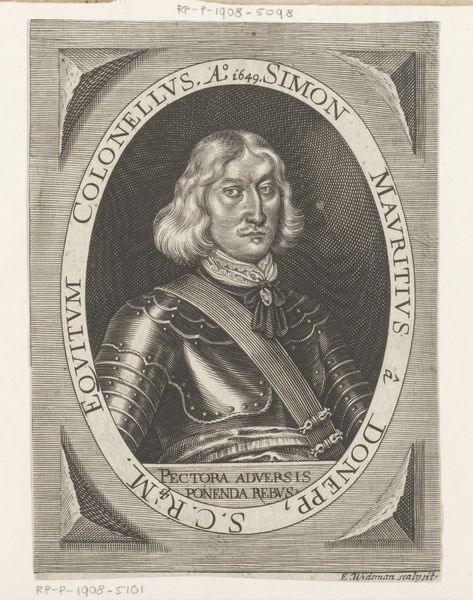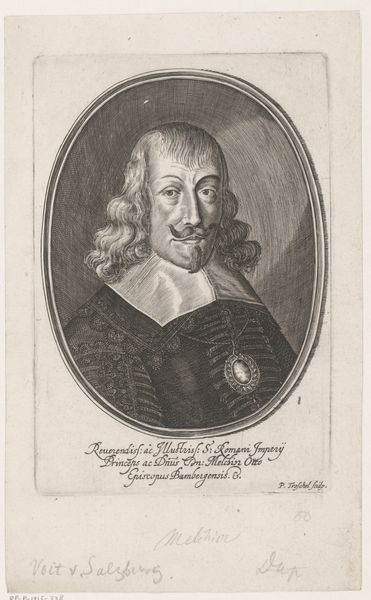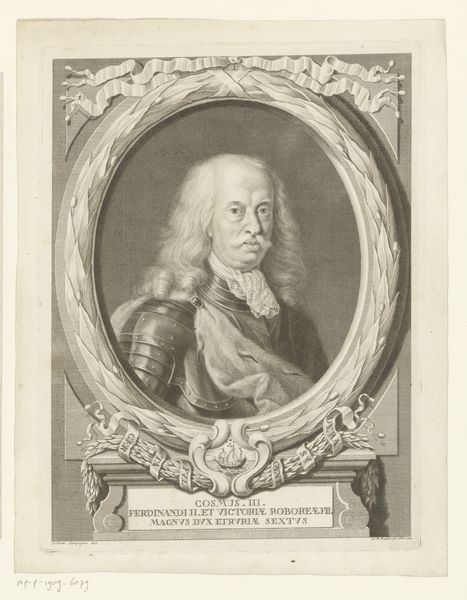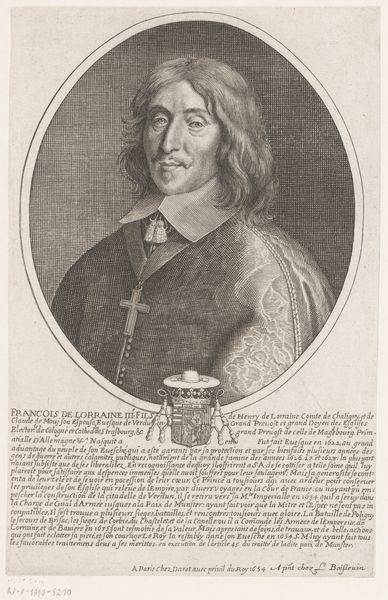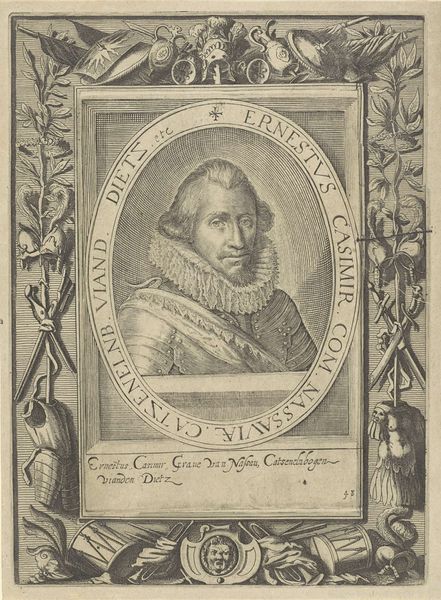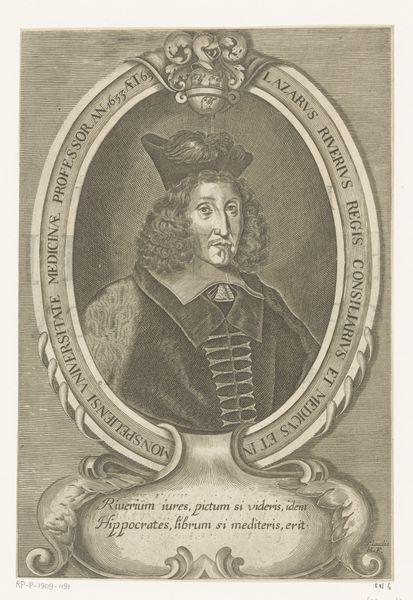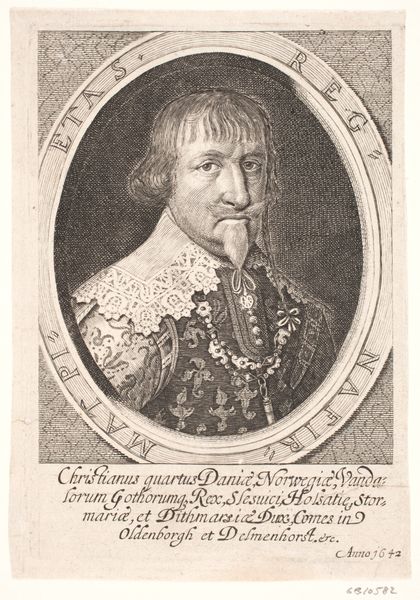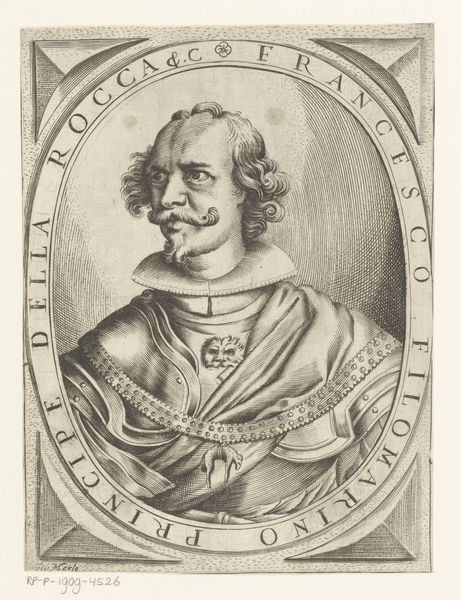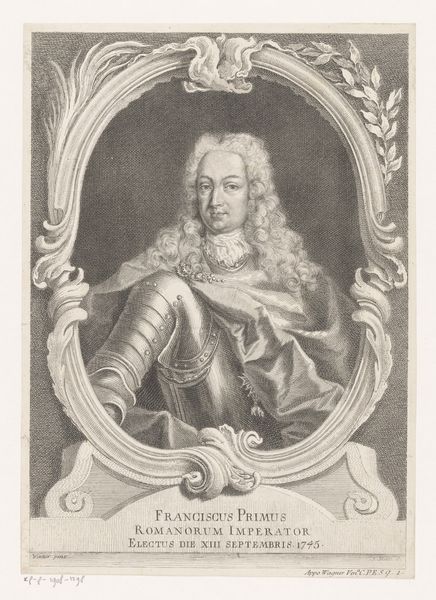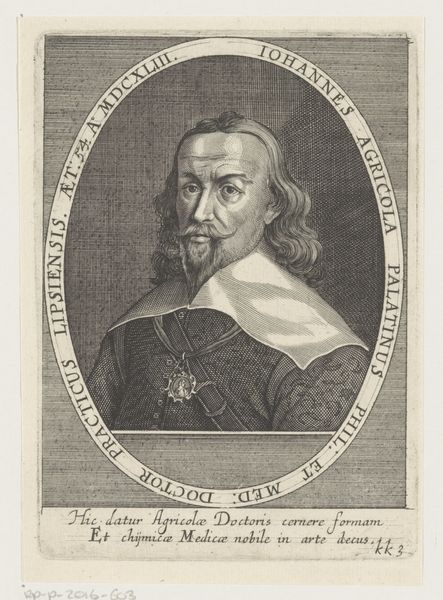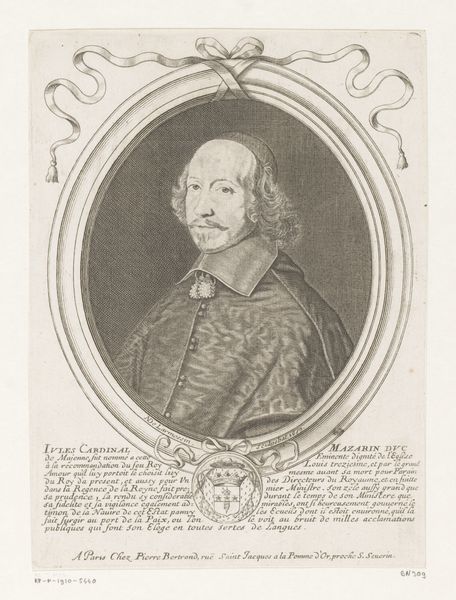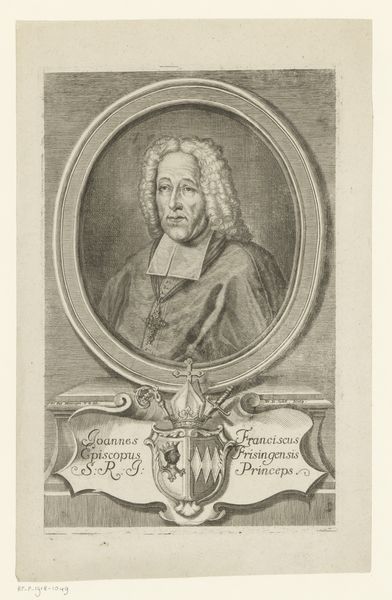
engraving
#
portrait
#
baroque
#
old engraving style
#
caricature
#
portrait drawing
#
history-painting
#
engraving
Dimensions: height 140 mm, width 100 mm
Copyright: Rijks Museum: Open Domain
Editor: This is a rather austere engraving from 1642, “Portret van Philipp Konrad Spiegel zum Diesenberg,” by Elias Widemann, currently residing at the Rijksmuseum. It's quite formal; the subject's gaze is direct, and the lettering surrounding the portrait adds to its gravity. What symbols stand out to you in this piece? Curator: Immediately, the inscription circling the portrait evokes a symbolic boundary, both literally framing the subject and figuratively establishing his identity within a defined social order. Do you notice the Latin phrase, "METAM PROPERAMVS AD VNAM"? It suggests a collective pursuit of a single goal, a key tenet for understanding group dynamics through visual symbols. Editor: I hadn't considered the Latin inscription as a symbol itself, more just decorative. Curator: Decoration was never neutral in the baroque era; it always reinforced meaning. Consider the subject's attire, suggesting wealth and military rank, mirrored by symbolic virtues like loyalty etched into cultural memory. The portrait's symbolic meaning speaks to both personal identity and one's place in the socio-political order of the era. Editor: So the symbols aren’t just visual but linguistic too, each working together? It’s like a carefully constructed narrative. Curator: Precisely. And narratives build and evolve over time. A modern viewer might see this and reflect on shifting cultural values around authority, how we visually represent power differently now. The artwork serves as a time capsule of sorts. Editor: That makes me see it in a completely new way. I initially saw it as just a historical record, but now I appreciate its intricate language. Curator: Indeed, and that visual language offers us keys to unlocking not only the past but how it still influences our present perception of symbols.
Comments
No comments
Be the first to comment and join the conversation on the ultimate creative platform.

